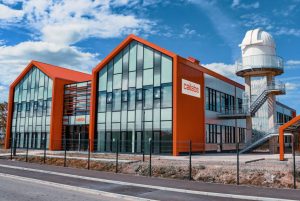Beam shaping with multi-plane light conversion for femtosecond laser material microprocessing
ICALEO Congress 2019
Authors: Clément Jacquard1, Antonin Billaud1, Bertrand Denolle1, Gwenn Pallier1, Pu Jian1, Olivier Pinel1, Guillaume Labroille1
1Cailabs (France)
Abstract
The range of applications of Ultra-Short Pulse (USP) laser-based material microprocessing is broadening to include consumer microelectronics as well as the automotive or aerospace industries. More and more materials are becoming processable, including metals, ceramics, semiconductors, polymers and organic materials.
USP laser-based processes offer a great advantage compared to traditional processes thanks to its inherent capability to deliver energy over an extremely short duration. The very high peak power allows matter ablation without melting the material thus increasing the process quality, accuracy and reproducibility.
In order to improve the quality of those processes, it is key to associate beam shaping to the USP laser. Beam shaping maximizes the useful energy and increases the process yield by decreasing scrap rate. There is also a strong incentive to shape beams of lower wavelengths, since these wavelengths improve the precision of the process, and are therefore now widely used in Industry.
The need to deal with high peak power while avoiding temporal and spectral dispersion makes USP laser beam shaping challenging. Moreover, shaping shorter wavelength beams increases the challenge, as the requirements on the beam shaper manufacturing quality become more demanding.
Multi-Plane Light Conversion (MPLC) is an innovative technique of beam shaping based on iterative modification of the beam transverse profile after successive reflections onto a phase plate. MPLC technology allows theoretically lossless complex beam shapes with a high control over amplitude and phase. The free-space reflective design allows for high beam shaping quality whilst conserving the ultra-short property of the laser pulses, which is not usually achievable through other beam shaping methods. Moreover, MPLC technology may be adapted to a wide range of wavelengths from visible to IR.
The capability of MPLC technology to meet the challenges of USP laser-based processes by shaping with a high precision new types of shapes is demonstrated. The shape quality in term of dimension and profile is detailed, as well as the pulse duration preservation and the capability to work at shorter wavelengths. Lastly in order to compensate for beam parameter variations (modal imperfections, tilt, shift or defocusing) a passive modal filter is included within the beam shaping functionality.
